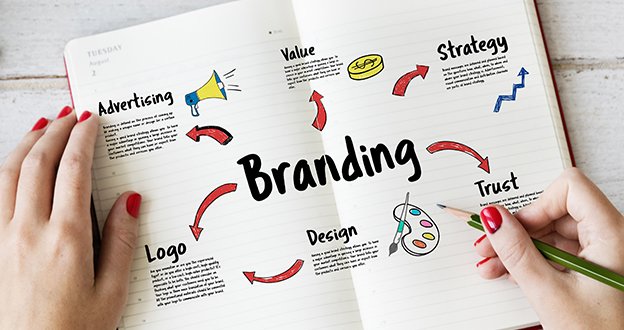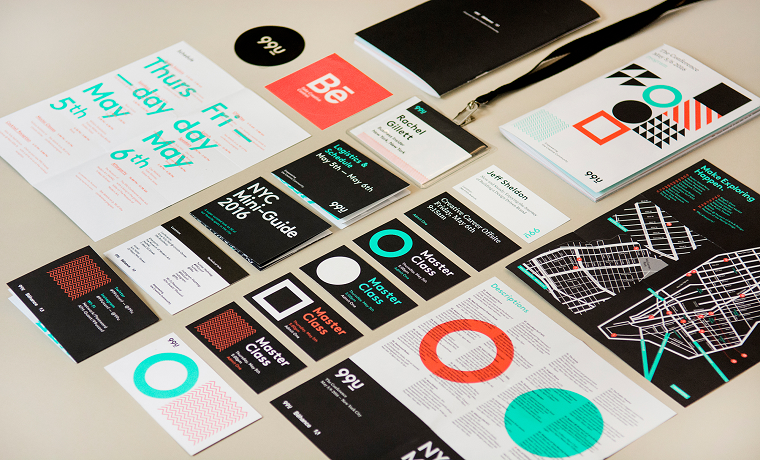A common misconception about branding that many businesses have is that a recognizable logo alone builds a brand. While a company logo is certainly one of the essential components of brand identity – it is just one of many assets that helps build a company’s brand. You will have to look through branding agencies and find the one that meets your company’s needs in terms of style, budget, and other factors.
In the same way that an outfit clues people into an individual’s personality and their values, a company’s logo is visual shorthand differentiating it from all of the other companies out there. Behind that logo exist many other components of brand identity (including a general visual aesthetic, tagline, content voice, and more which are outlined below). All of these shape how consumers feel about your company – and all are the result of a successful branding process.
Why Does Branding Matter?
Branding is important because it shapes the public’s perception of your company; when done right, it can attract and retain the right audience. Still have doubts that branding is essential? Let’s look at the facts:
- 75% of consumers say that brand awareness is an influential factor when making purchasing decisions;
- 85% of consumers say they choose known brands over unknown ones when making a first– time purchase;
- Strong brands outperform weak brands by 20%;
- 92% of consumers trust earned media or brand recommendations from friends and family;
- In a 2012 study on branding for B2B companies, it was established that decision-makers consider the brand a central rather than a marginal element of a supplier’s proposition and that a company’s brand is on par with sales as an influencing factor.

Uncovering the Branding Process
If you’re still reading, you probably agree that developing a brand identity for your company is important – but you may not know how exactly to start the brand development process. The following straightforward branding steps and processes can help ensure you develop a company brand that works for your business and elicits a response from your target audience.
Step 1. Business Goals and Brand Personality
Before starting the branding process, you need to know the general direction you want to go in. For example: Who are you targeting? What is your mission? What do your customers need? How do you solve your customer’s problems? What is the voice of your brand? If you know the answers to all of these, great! If not, you may decide to hire a retail design agency to help you out with all of this.
The strategy session helps develop a personality for your brand and a base foundation in which to begin the logo process. You need to start thinking about your brands’ values from the beginning. Why? Because your brand needs a clear direction from the start. Remember, it is a process – goals can be modified during the creative process, but it’s important to have a basic direction.
Step 2. Market and Client Research
Research is key. The agency will look at the current market and your potential competitors. It’s good to learn from someone else’s experience, i.e., what is your competitor doing right, and what are they missing?
Having the necessary demographics and market research top allows branding agencies to create a unique and efficient logo & brand identity that will make you stand out from your competition.
Designers and clients’ preferences should take a backseat to the needs of the target audience. This cannot be stressed enough. A professional branding agency understands it can be very difficult for companies and owners to trust in a design style they are not attracted too. However, putting trust in the design team and the results of market research is key to your brand’s success. A brand needs to make a good impression on potential customers to gain their trust. Your target audience must always be the priority.
Step 3. Branding Design
People often confuse logos for brands, but the logo is only one piece of the branding process. It’s the visual mark of brand identity and the most prominent symbol that connects you with your target audience.
An important item to consider before you start your logo design includes exploring competitor logos. Avoiding unnecessary similarities with other logos in the market will make your logo original.
When all the core information is gathered, the agency will move to a more artistic stage – the creative process. At this stage, the team will develop several logo concepts and a style. They will help you choose an overarching style direction, fonts, imagery, and color palette that works best for your company. A well thought out logo is worth your time and investment.
Step 4. Visual Brand Elements
Logo design is not the only visual representation of a brand. Using consistent colors, patterns, typography style, or supporting graphics, help your customers recognize your brand.
Branding agencies often look for ways to personalize your brand. Supporting graphics or patterns is a great way to create recognition for your brand symbolically. This can be created as part of a logo or exist as an individual element of the brand.
Another visual element responsible for brand identity is the typography of your brand. Many logos are created via typography or contain unique fonts within it. Banners, business cards, basically anything that a company develops should all reflect the overall brand identity. Using consistent fonts that support your brand is important to create unity and instant brand recognition.
All these are used in custom product packaging to reinforce brand recall and set your products apart from the competition. Other than your product packaging, your brand’s signature visual elements should be used in everything, from business cards to social media posts, to help consumers recognize your brand. After all, people are mostly visual creatures; they’re more likely to remember you if you use visual aids to reinforce their memory.
Step 5. Corporate Brand Style
When the logo is ready, the color palette is chosen, and other visual elements are prepared, it’s time to put them together in a corporate style. There are some commonly used items by many different companies:
- Business cardsToday it’s a must-have item in business communication. Therefore it’s vital to make sure your business cards properly reflect your brand.
- Sales booklets and mail handoutsCreating branding material that lists your services or product details is very important. Having professionally printed information allows you to show future customers what exactly you can offer them.
- T-shirt and hatsClothes with your brand bring team spirit to a company and place your brand front and center for potential customers. Branded T-shirts and hats can be a good alternative to a uniform if it’s required or they can be used as presents.
Step 6. Style Guide Creation
What is a style guide? A style guide shows you the “dos” and “don’ts” of how to use your new logo and brand. Agencies tend to provide style guides to their branding clients to ensure all of the assets are used properly. Traditionally, a style guide includes the color palette, font choices, correct and incorrect ways to use your logo, and any supporting design materials or graphics.
Conclusion
As you can see, branding is a complex process. Each step should be well thought out based on the needs of the target audience and business goals. Just because a logo looks good, does not mean it will be effective with your particular target market.
Remember that you are developing a brand for your target audience, not just yourself, so make certain the style and voice of your customer comes first. While you may have a particular vision of your brand, it’s best to trust branding professionals who know the industry well and can make your company stand out among your competitors.

